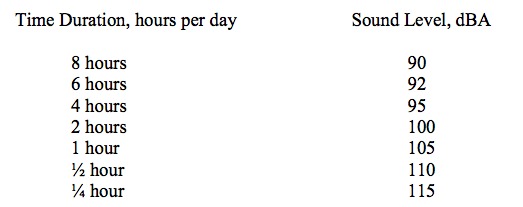Monitoring Procedures:
A noise survey is typically conducted with a direct-reading sound level meter such as the Quest Model 155 Precision Sound Level Meter. The meter and the dosimeters described below are calibrated with the CA-12B sound calibrator. The calibrator is a self-contained oscillator that produces a stable 110 dBA sound pressure at a frequency of 1000 Herz.
Longer term noise exposures are measured with digital dosimeters manufactured by Quest Electronics, Model M-78 Noise Dosimeter. The dosimeters are equipped with omnidirectional ceramic microphones and solid state amplifiers that continuously measure sound levels in the range of 30 to 140 decibels (dB). An electronic signal from the chemical cell is transmitted to a digital receiver that converts the signal into a time weighted sound level at the time of monitoring. Most industrial noise regulations require “A” scale measurements, reported in units of dBA. The dosimeter converts the noise level to dose, with 100% dose equivalent to 90 dBA and 50% dose equivalent to 85 dBA.
The results are compared to the permissible noise exposures established by the OSHA Occupational Noise Standard 29 CFR 1910.95. The OSHA requires that a hearing conservation program be established by the employer when employee noise exposures equal or exceed an 8-hour time-weighted average sound level of 85 dBA (50% dose). The OSHA also has established that an employee may be exposed to a sound level no greater than 90 dBA for eight hours a day, and to sound levels above 90 dBA for lesser time durations as follows:
Interpretation:
When noise exposures exceed the OSHA Action Level of 85 dBA a hearing conservation program must be implemented. The program should include employee monitoring, annual training, annual audiometric testing, and hearing protection for all employees exposed above 85 dBA on an 8-hour time-weighted basis.
